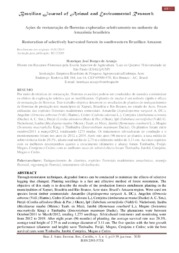Results reveal adult plants with a high genetic variability and young populations with a reduced diversity. Data points to the occurrence of inbreeding between young plants, a problem caused by inbreeding. The loss of genetic diversity weakens species survival. Researchers recommend genetic analysis to guide forest management. Planting seedlings in gaps where mahogany shows a better development can minimize the vulnerability of the species. Researchers from Embrapa Acre and partner institutions identified a significant loss of genetic diversity in young mahogany (Swietenia macrophylla) plants. The research confirms the vulnerability of this forest species, greatly valued in the Brazilian wood market but on the list of endangered species, and suggests new strategies to improve its management and assure its conservation. The study published in the journal Forest Ecology and Management was carried out in a managed area of the state forest, Floresta Estadual do Antimary, located in the municipality of Sena Madureira, in the state of Acre, Brazil. The fieldwork involved the identification and mapping of 83 adult trees, with a minimum diameter of 43 centimeters (16.9 inches), in an area of 1.650 hectares, as well as 187 young trees in a range of 20 kilometers (12.4 miles). The analyses were performed at the Molecular Biology Laboratory of Embrapa Acre using plant tissue samples to evaluate generations of the species (adult and young plants) and the spatial genetic structure of adult trees, in order to verify the potential for genetic variability of mahogany and possible anomalies in the reproduction of the species. The researcher Tatiana de Campos, one of the authors of the study, explains that the extraction of DNA from the plant, associated with the use of molecular markers, allows the detection of the gene flow: the transfer of genetic information between individuals of the same population or species by observing the relationship among their descendants. The technique also allows evaluating the behavior of the pollinator of the species and determining the occurrence of inbreeding. This information is essential to increase knowledge about the reproduction system of mahogany and of other forest species. “We identified the parents of the young plants and the rate of cross-fertilization. Besides the loss of genetic diversity, we observed inbreeding in the evaluated material, a problem also known as consanguinity, which is an evidence of reproduction between genetically similar individuals. Therefore, there was a reduction in the number of alleles, that is, in the capacity to transmist genetic information during mahogany's natural reproduction process, which weakens the survival of the species”, asserts the researcher. Molecular studies and conservation of the species Alexandre Sebbenn, a researcher at Instituto Florestal (IF) of São Paulo, believes it is necessary to add actions to management plans in order to monitor the genetic diversity and the reproduction patterns of this forest species by evaluating, through molecular techniques, samples collected before and after selective cuts. “These procedures could allow interventions, such as planting seedlings in the managed area, and suggest adjustments in the current management”, he points out, emphasizing that studies on the subject are still scarce. “However, they are also important to understand the natural regeneration process of the species and to increase the sustainability of forest management”, he adds. Tatiana de Campos highlights the importance of studies that use molecular techniques to detect other anomalies in plant reproduction dynamics, such as genetic mutations that can endanger the species. “In the case of mahogany, knowledge of the genetic variability of the species is key for the definition and adoption of more effective guidelines for its conservation”, she concludes. Efforts to save mahogany Recognized worldwide as a noble wood due to its properties, such as stability, duration, easy handling, and bright reddish-brown color (once polished), mahogany can be used for manufacturing sophisticated furniture and musical instruments, civil and marine construction, among other applications. Naturally occurring in tropical forests, in Brazil it is found in the states of Acre, Pará, Goiás, Maranhão, Mato Grosso, Rondônia, and Tocantins. With a low population density – less than a tree per hectare –, this forest species has a high commercial value and is well accepted in the international market. Previous studies about the dynamics of mahogany development estimate that, due to indiscriminate logging, only 20% of the initial wood inventory is left in South America. With the reduction in the population of this species, initiatives involving national and international organisms resulted in protection measures for mahogany. Since 2008, the tree is part of the official list of endangered species of Brazilian flora under the category “vulnerable”. It was also included in the Red List of endangered species by International Union for Conservation of Nature (IUCN). Photo: Sabrina Oliveira Although mahogany is an endangered species, according to the normative instruction of Instituto Brasileiro do Meio Ambiente e dos Recursos Naturais Renováveis (Ibama), in effect since 2015, forest management plans that stipulate the exploitation of the species can be approved and executed. Among the criteria for the exploration of forest species in a vulnerable situation, the current law recommends maintaining at least 15% of the total of existing trees in the managed area, respecting the minimum limit of four trees per 100 hectares. For Sebbenn, this permissiveness of the law regarding the management of endangered forest species reinforces the need that management plans include genetic studies about the impacts of selective exploitation and its effects on forest regeneration and on the future wood inventory of species with a high commercial value. “Studies with this goal are incipient and need to be considered as allies of exploitation norms, as a way to protect species”, he evaluates. The forest engineer Sabrina Oliveira, another author of the paper, reinforces in her master's degree research on the diversity and genetic structure of mahogany that, even when sustainability criteria are followed, including selective cuts in management plans, there is an increased risk of species extinction. “Mahogany is dependent on random breeding and, therefore, managing it without taking this into account reduces the number of individuals (trees) in the forest, damaging the pattern of genetic diversity and their capacity of transferring genetic information. Preserving the existing population is fundamental for the management of the species”, she defends. Strategies for the conservation of the species Embrapa Acre has been developing studies about the regeneration of forest species for over 20 years in permanent logging areas in the state forest, Floresta Estadual do Antimary. These studies have also been investigating the dynamics of the natural regeneration of mahogany in managed areas. According to the researcher Marcus Vinício d’Oliveira, because mahogany is a pioneer species, to regenerate itself, it requires large clear patches in the forest, since the tree does not develop well under closed canopies, with a low light incidence. For this reason, there are practically no small-sized plants in the Brazilian Amazon rainforest. “Our expectation was that the forest gaps (roads, decks, skid trails), depending on logging management, could increment the natural regeneration of mahogany, which has a greater chance of survival in open areas. However, we noticed that these areas did not significantly favor the regeneration process since the number of young plants we identified was low. The low emergence of seedlings is also a risk factor for the survival of the species, which led us to carry out genetic studies to better understand its reproductive behavior”, explains d’Oliveira. The researcher shares that the studies about the natural regeneration of mahogany confirm the fragility of the species evidenced in molecular studies. “The results show that adult trees have a good genetic variability, while the younger ones carry traces of inbreeding. This reinforces the need to adopt forestry practices, such as the artificial regeneration of mahogany by planting seedlings in gap areas, where their chance of survival is greater. This practice can contribute to a sustainable management and reduce the risks of the species disappearing”, emphasizes d’Oliveira. According to Tatiana de Campos, mahogany is among the species that have a reproductive biology with a high genetic variability. The trees shows different types of a single gene (DNA segment responsible for inherited genetic characteristics), which means that in order to generate descendants and survive, fecundation needs to occur between different individuals. The researcher defends that knowledge about spatial genetic structure, reproductive system, genetic flow, and levels of genetic diversity is essential to understand the effects of the selective cut and its influence on the population dynamics of a species. “Through this information, it is possible to support both the conservation and preservation of parent trees in managed forests, as well as the cultivation of seedlings for gene banks. These strategies may enable forestry treatments in management areas and support reforestation programs and the genetic improvement of tree species with some aggregated value, including mahogany”, she says. The research also shows that another possible way to change the scenario of mahogany vulnerability is by adding pollen donors, with more alleles, to natural populations with a significant decline in diversity. In addition to forestry practices, modern techniques, such as the use of molecular code bars (DNA barcode), which allow the identification of illegal logging, can strengthen the actions for the conservation of the species. “The information obtained by the research represents an important tool to support the elaboration of public policy for a better management of timber forest species that are in a vulnerable situation or endangered. Legal mechanisms are fundamental to ensure the survival of mahogany and of other trees of economic importance in the Amazon rainforest”, concludes Tatiana de Campos.
Photo: Tatiana de Campos

Mahogany is among endangered species and this research confirms its vulnerability
-
Results reveal adult plants with a high genetic variability and young populations with a reduced diversity. -
Data points to the occurrence of inbreeding between young plants, a problem caused by inbreeding. -
The loss of genetic diversity weakens species survival. -
Researchers recommend genetic analysis to guide forest management. -
Planting seedlings in gaps where mahogany shows a better development can minimize the vulnerability of the species. |
Researchers from Embrapa Acre and partner institutions identified a significant loss of genetic diversity in young mahogany (Swietenia macrophylla) plants. The research confirms the vulnerability of this forest species, greatly valued in the Brazilian wood market but on the list of endangered species, and suggests new strategies to improve its management and assure its conservation.
The study published in the journal Forest Ecology and Management was carried out in a managed area of the state forest, Floresta Estadual do Antimary, located in the municipality of Sena Madureira, in the state of Acre, Brazil. The fieldwork involved the identification and mapping of 83 adult trees, with a minimum diameter of 43 centimeters (16.9 inches), in an area of 1.650 hectares, as well as 187 young trees in a range of 20 kilometers (12.4 miles).
The analyses were performed at the Molecular Biology Laboratory of Embrapa Acre using plant tissue samples to evaluate generations of the species (adult and young plants) and the spatial genetic structure of adult trees, in order to verify the potential for genetic variability of mahogany and possible anomalies in the reproduction of the species.
The researcher Tatiana de Campos, one of the authors of the study, explains that the extraction of DNA from the plant, associated with the use of molecular markers, allows the detection of the gene flow: the transfer of genetic information between individuals of the same population or species by observing the relationship among their descendants. The technique also allows evaluating the behavior of the pollinator of the species and determining the occurrence of inbreeding. This information is essential to increase knowledge about the reproduction system of mahogany and of other forest species.
“We identified the parents of the young plants and the rate of cross-fertilization. Besides the loss of genetic diversity, we observed inbreeding in the evaluated material, a problem also known as consanguinity, which is an evidence of reproduction between genetically similar individuals. Therefore, there was a reduction in the number of alleles, that is, in the capacity to transmist genetic information during mahogany's natural reproduction process, which weakens the survival of the species”, asserts the researcher.
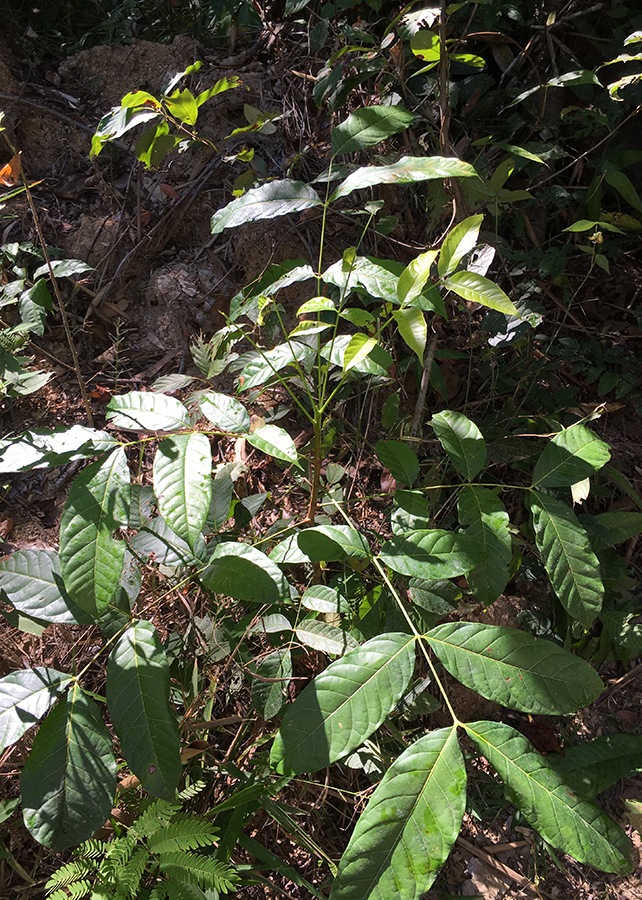 Molecular studies and conservation of the species
Molecular studies and conservation of the species
Alexandre Sebbenn, a researcher at Instituto Florestal (IF) of São Paulo, believes it is necessary to add actions to management plans in order to monitor the genetic diversity and the reproduction patterns of this forest species by evaluating, through molecular techniques, samples collected before and after selective cuts.
“These procedures could allow interventions, such as planting seedlings in the managed area, and suggest adjustments in the current management”, he points out, emphasizing that studies on the subject are still scarce. “However, they are also important to understand the natural regeneration process of the species and to increase the sustainability of forest management”, he adds.
Tatiana de Campos highlights the importance of studies that use molecular techniques to detect other anomalies in plant reproduction dynamics, such as genetic mutations that can endanger the species. “In the case of mahogany, knowledge of the genetic variability of the species is key for the definition and adoption of more effective guidelines for its conservation”, she concludes.
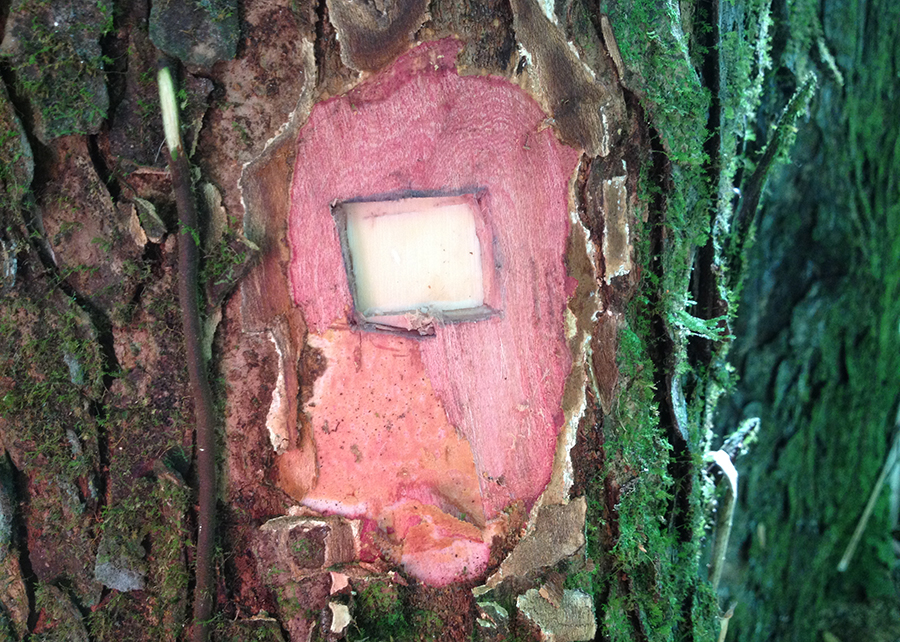 Efforts to save mahogany Efforts to save mahogany
Recognized worldwide as a noble wood due to its properties, such as stability, duration, easy handling, and bright reddish-brown color (once polished), mahogany can be used for manufacturing sophisticated furniture and musical instruments, civil and marine construction, among other applications. Naturally occurring in tropical forests, in Brazil it is found in the states of Acre, Pará, Goiás, Maranhão, Mato Grosso, Rondônia, and Tocantins. With a low population density – less than a tree per hectare –, this forest species has a high commercial value and is well accepted in the international market. Previous studies about the dynamics of mahogany development estimate that, due to indiscriminate logging, only 20% of the initial wood inventory is left in South America. With the reduction in the population of this species, initiatives involving national and international organisms resulted in protection measures for mahogany. Since 2008, the tree is part of the official list of endangered species of Brazilian flora under the category “vulnerable”. It was also included in the Red List of endangered species by International Union for Conservation of Nature (IUCN). Photo: Sabrina Oliveira |
Although mahogany is an endangered species, according to the normative instruction of Instituto Brasileiro do Meio Ambiente e dos Recursos Naturais Renováveis (Ibama), in effect since 2015, forest management plans that stipulate the exploitation of the species can be approved and executed. Among the criteria for the exploration of forest species in a vulnerable situation, the current law recommends maintaining at least 15% of the total of existing trees in the managed area, respecting the minimum limit of four trees per 100 hectares.
For Sebbenn, this permissiveness of the law regarding the management of endangered forest species reinforces the need that management plans include genetic studies about the impacts of selective exploitation and its effects on forest regeneration and on the future wood inventory of species with a high commercial value. “Studies with this goal are incipient and need to be considered as allies of exploitation norms, as a way to protect species”, he evaluates.
The forest engineer Sabrina Oliveira, another author of the paper, reinforces in her master's degree research on the diversity and genetic structure of mahogany that, even when sustainability criteria are followed, including selective cuts in management plans, there is an increased risk of species extinction. “Mahogany is dependent on random breeding and, therefore, managing it without taking this into account reduces the number of individuals (trees) in the forest, damaging the pattern of genetic diversity and their capacity of transferring genetic information. Preserving the existing population is fundamental for the management of the species”, she defends.
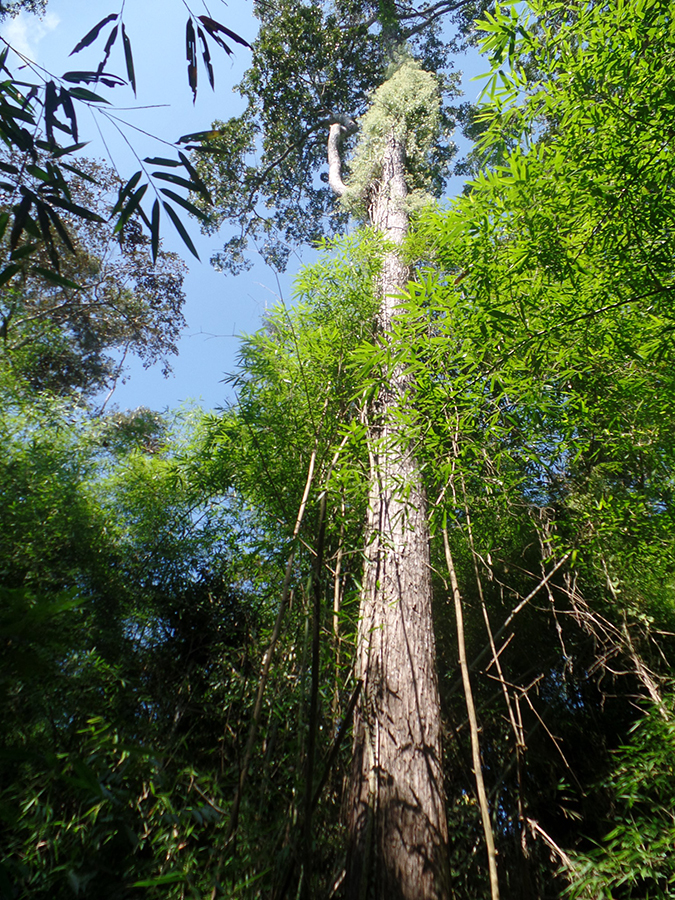
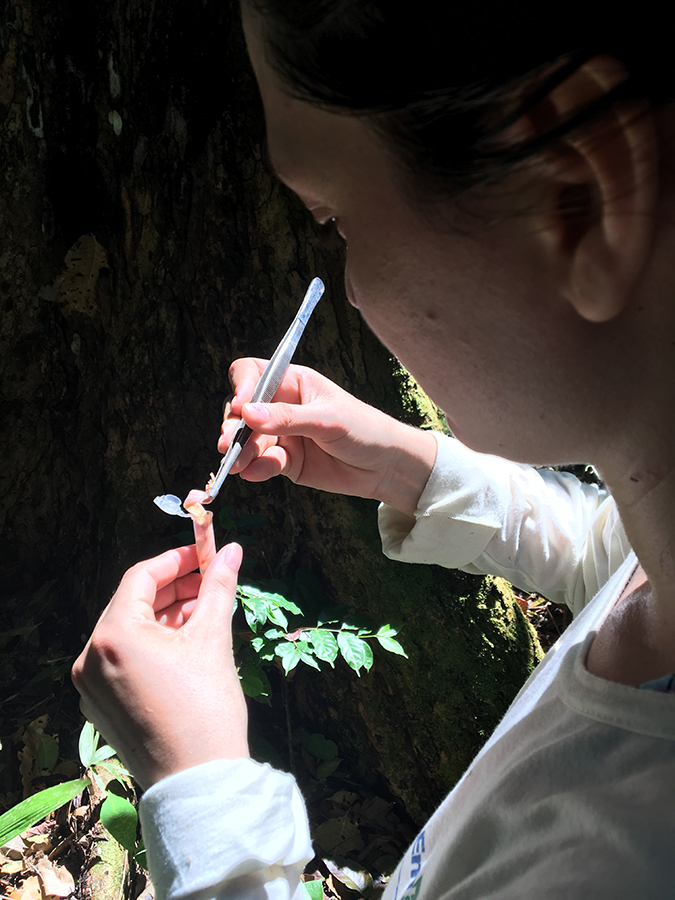 Strategies for the conservation of the species
Strategies for the conservation of the species
Embrapa Acre has been developing studies about the regeneration of forest species for over 20 years in permanent logging areas in the state forest, Floresta Estadual do Antimary. These studies have also been investigating the dynamics of the natural regeneration of mahogany in managed areas.
According to the researcher Marcus Vinício d’Oliveira, because mahogany is a pioneer species, to regenerate itself, it requires large clear patches in the forest, since the tree does not develop well under closed canopies, with a low light incidence. For this reason, there are practically no small-sized plants in the Brazilian Amazon rainforest.
“Our expectation was that the forest gaps (roads, decks, skid trails), depending on logging management, could increment the natural regeneration of mahogany, which has a greater chance of survival in open areas. However, we noticed that these areas did not significantly favor the regeneration process since the number of young plants we identified was low. The low emergence of seedlings is also a risk factor for the survival of the species, which led us to carry out genetic studies to better understand its reproductive behavior”, explains d’Oliveira.
The researcher shares that the studies about the natural regeneration of mahogany confirm the fragility of the species evidenced in molecular studies. “The results show that adult trees have a good genetic variability, while the younger ones carry traces of inbreeding. This reinforces the need to adopt forestry practices, such as the artificial regeneration of mahogany by planting seedlings in gap areas, where their chance of survival is greater. This practice can contribute to a sustainable management and reduce the risks of the species disappearing”, emphasizes d’Oliveira.
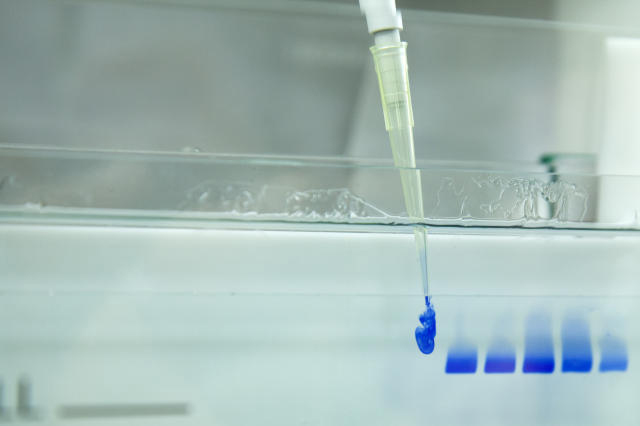 According to Tatiana de Campos, mahogany is among the species that have a reproductive biology with a high genetic variability. The trees shows different types of a single gene (DNA segment responsible for inherited genetic characteristics), which means that in order to generate descendants and survive, fecundation needs to occur between different individuals.
According to Tatiana de Campos, mahogany is among the species that have a reproductive biology with a high genetic variability. The trees shows different types of a single gene (DNA segment responsible for inherited genetic characteristics), which means that in order to generate descendants and survive, fecundation needs to occur between different individuals.
The researcher defends that knowledge about spatial genetic structure, reproductive system, genetic flow, and levels of genetic diversity is essential to understand the effects of the selective cut and its influence on the population dynamics of a species. “Through this information, it is possible to support both the conservation and preservation of parent trees in managed forests, as well as the cultivation of seedlings for gene banks. These strategies may enable forestry treatments in management areas and support reforestation programs and the genetic improvement of tree species with some aggregated value, including mahogany”, she says.
The research also shows that another possible way to change the scenario of mahogany vulnerability is by adding pollen donors, with more alleles, to natural populations with a significant decline in diversity. In addition to forestry practices, modern techniques, such as the use of molecular code bars (DNA barcode), which allow the identification of illegal logging, can strengthen the actions for the conservation of the species.
“The information obtained by the research represents an important tool to support the elaboration of public policy for a better management of timber forest species that are in a vulnerable situation or endangered. Legal mechanisms are fundamental to ensure the survival of mahogany and of other trees of economic importance in the Amazon rainforest”, concludes Tatiana de Campos.
Diva Gonçalves (MTb 0148/AC)
Embrapa Acre
Collaboration: Mauricília Silva
Embrapa Acre
Translation: Micla de Souza and Ana Beatriz Linhares
Secretariat of Research and Development
Further information on the topic
Citizen Attention Service (SAC)
www.embrapa.br/contact-us/sac/

 Molecular studies and conservation of the species
Molecular studies and conservation of the species Strategies for the conservation of the species
Strategies for the conservation of the speciesAccording to Tatiana de Campos, mahogany is among the species that have a reproductive biology with a high genetic variability. The trees shows different types of a single gene (DNA segment responsible for inherited genetic characteristics), which means that in order to generate descendants and survive, fecundation needs to occur between different individuals.

